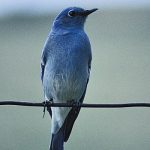Create a Community Environmental Story
Interstate Commission on the Potomac River Basin
What is an Environmental Story?
A written account of your community’s environment is called a Community Environmental Story. It is designed to be a guide to an area’s natural and human systems―past, present, and future―and help citizens relate caringly to their local natural and human environment. Youth leaders, parents, new community members, historians, and environmentalists of all ages will find it a useful reference, although it is often intended to serve as a teaching companion.
The environment, which is approached holistically, is defined to include the natural, cultural, built and social aspects of the surroundings that have an impact on our lives. A Community Environmental Story establishes a bridge between the community’s history and its future and may help inform future development decisions.
Why Should I Create the Environmental Story of my Community?
 To foster a mindset in a community’s citizens that can lead to a sustainable future is the primary objective of a Community Environmental Story. The hands-on interpretive approach is designed to heighten awareness, enhance citizens’ capacity to enjoy the beauty surrounding them, and develop a sense of social and environmental stewardship.
To foster a mindset in a community’s citizens that can lead to a sustainable future is the primary objective of a Community Environmental Story. The hands-on interpretive approach is designed to heighten awareness, enhance citizens’ capacity to enjoy the beauty surrounding them, and develop a sense of social and environmental stewardship.
A Community Environmental Story is interdisciplinary and stresses critical thinking, establishing a bridge between your community today and tomorrow. Environmental profiles include air, water quality, solid and hazardous waste, energy, historic preservation, the built environment, transportation, neighborhoods, and redevelopment. Along with an exploration of the area’s ethnic, racial, socioeconomic and neighborhood grouping, climate, vegetation, wildlife, and terrain are studied and discussed. Readers develop a sense of place and become aware of shared commonalities in the problems and aspirations that underlie the differences they perceive in language and culture. This helps establish a base for mutual understanding and cooperation.
Readers learn to understand how a responsible approach to their immediate surroundings can help provide a clean, attractive, habitable place to live. This establishes a meaningful knowledge base for developing an environmental ethic and extrapolating their conservationist concern beyond political and personal boundaries. Readers are encouraged to make informed and objective cost/benefit evaluations.
Readers of all ages are challenged to deal with current local problems whose immediacy make them seem less black-and-white than issues seen from a distance. The intent is for them to fact gather and learn to understand that the well-being of their home, its immediate surroundings, and the people living there are inextricably related to the environmental health of their city and beyond.
Developing Your Goals and Budget
Documenting your Community Environmental Story can be expensive depending on your goals. Develop your goals independently from your budget, but keep in mind that in the end the amount of money available to you will influence the product that you create.
Goals
Your goals for creating a Community Environmental Story can be very specific or quite broad. Think about the audience you are targeting and make sure to develop your work plan accordingly when developing your goals. Some example goals include:
- Raising public awareness about the treasures and threats to their watershed;
- Teaching students about their local community to develop their knowledge base and environmental ethic;
- Documenting the history of your community and watershed for future generations;
- Educating local elected officials about their local environment so that they can make better decisions based on the costs and benefits to the ecosystem
Again, keep in mind your goals and audience in determining your work plan. For example, if your goal is to teach students, you may want to involve them in the creation of your Community Environmental Story. There is no better type of learning than experiential learning!
Budget
Cost
The cost can be thousands of dollars if you would like to publish and distribute your story to a large audience using quality materials. For example, a Community Environmental Story published in Florida and distributed to 2,300 students and teachers cost approximately $22,000―just for the editing and publishing! On the other hand, if you plan to only publish your story on line, costs can be quite low.
| Published Environmental Story | On-line Environmental Story |
| Researching the story: $0 Writing the story: $0 Professional photos and graphics: $7,000 Maps: $5,000 Editing: $5,000 Printing: $5,000-$8,000 Distribution: $2,500TOTAL ESTIMATED COST: $24,500-$27,500 |
Researching the story: $0 Writing the story: $0 Professional photos and graphics: $7,000 Maps: $5,000 Editing: $0 Web hosting: $200/yearTOTAL ESTIMATED COST: $12,200 |
These costs are based on the following estimates:
Paper: $4.00-$40.00 per ream depending on the quality of paper
Printing: Three cents to a dollar a page depending on if you are printing or copying it yourself or having it done professionally
Photos and graphics: Can range from free (your own or royalty-free photos and graphics) to expensive
Maps: Free to expensive depending on if you are using publicly available maps, making one yourself, or paying a contractor to make one. Make sure to check with your local planning department to see if they can provide maps.
Research: Free (your own time) to expensive (paying a contractor to do the research)
Postage: Only if you plan on sending your fact sheets out by mail
Web site hosting: If someone in your group has web expertise a fact sheet can be integrated in your web site at no cost. If you want to have a professional design and host your fact sheet, it could cost a few hundred dollars.
Financing
The options available for paying for the development, printing and distribution of your Community Environmental Story vary depending on your intended audience. If the story will be distributed to the general public, grants are often available from public and private environmental organizations. Grantors include the Chesapeake Bay Trust, Chesapeake Bay Foundation, Pennsylvania’s Growing Greener Program, the Chesapeake Bay Restoration Fund, and the National Fish and Wildlife Foundation’s Chesapeake Bay Stewardship Fund. Your local government also may help pay for its publication.
Creating an Environmental Story
Creating a Community Environmental Story is a time consuming process. Give yourself a minimum of one year from start to finish. The amount of time it takes to put together your story will depend on how dedicated your project team is and the complexity of your community’s history. 

